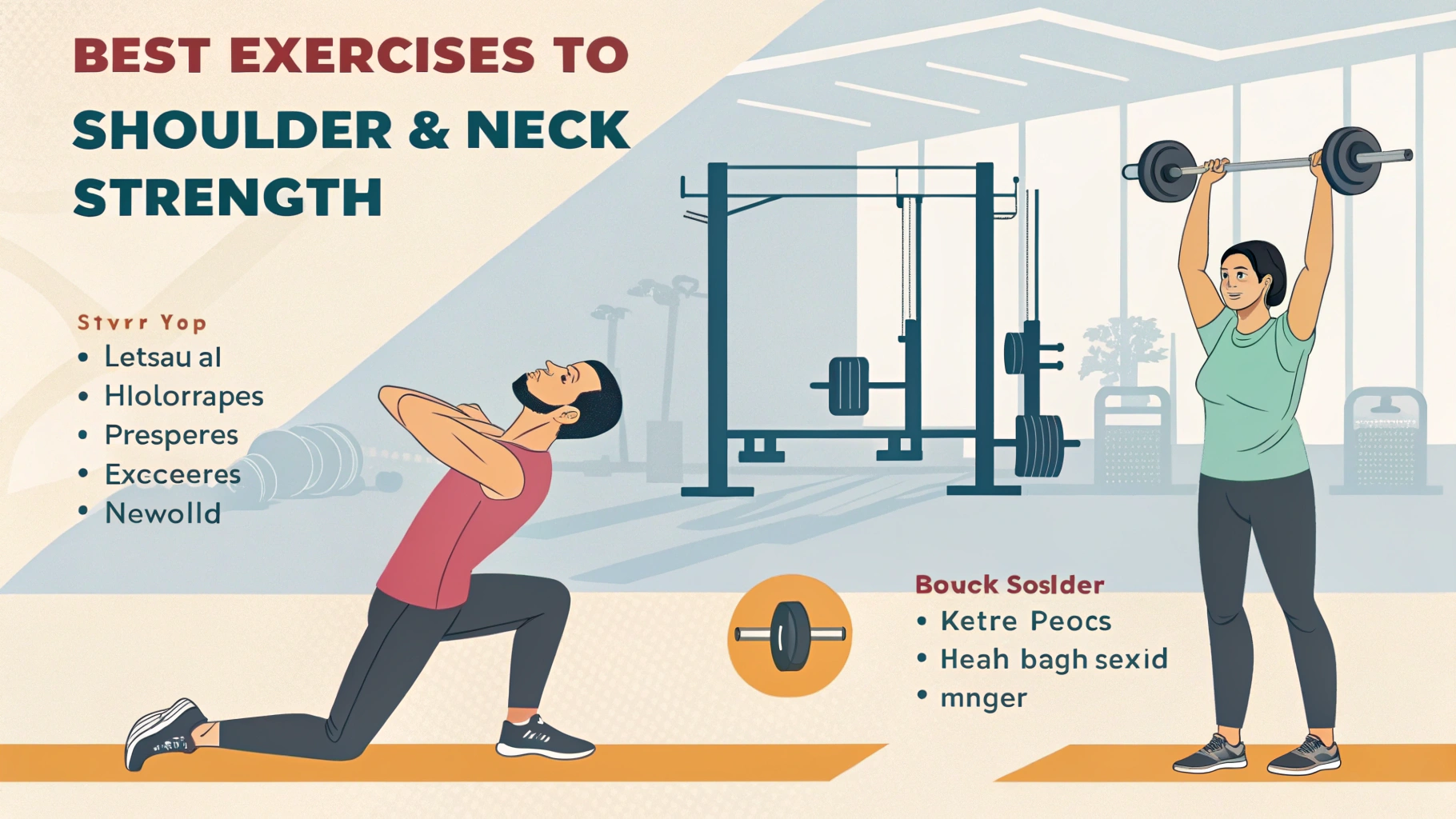Building shoulder and neck strength is crucial for both aesthetics and functional fitness. Strong shoulders and neck muscles improve posture, enhance upper body functionality, and help prevent injuries, making them an essential component of a well-rounded fitness regimen. This guide will explore the best exercises for strengthening these areas, along with technical breakdowns, common mistakes, and programming guidelines.
Introduction
The shoulder and neck region is vital for movements ranging from lifting and carrying to pushing and pulling. Prioritizing their strength leads to improved athletic performance and reduced risk of injury.
- Benefits and Importance: Improved posture, enhanced upper body functionality, reduced injury risk.
- Who Should Perform: Athletes, fitness enthusiasts, individuals with postural deficiencies.
- Required Equipment: Dumbbells, resistance bands, barbell, cable machine.
Technical Breakdown
Exercise 1: Dumbbell Shoulder Press
- Starting Position: Sit on a bench with back support, feet flat, dumbbells at shoulder height.
- Step-by-step Execution:
- Begin with wrists straight, palms facing forward.
- Press dumbbells upward until arms are fully extended.
- Pause at the top, then lower slowly to the start.
- Breathing Pattern: Inhale before pressing, exhale during the upward movement.
- Key Form Points: Maintain a neutral wrist position, engage the core.
- Range of Motion: Full extension at the top, controlled descent to shoulder height.
Common Mistakes and Corrections
- Arching the Back: Engage core and use a bench with back support to stabilize.
- Limited Range of Motion: Focus on full extension and controlled lowering.
- Incorrect Wrist Position: Keep wrists straight and inline with forearms.
- Uneven Lifting: Ensure even weight distribution in both hands.
- Rushing the Movement: Slow down for better muscle activation and control.
Variations and Progressions
- Beginner Modifications: Seated press with resistance bands for lighter load and stability.
- Advanced Variations: Single-arm dumbbell press to challenge stability and core engagement.
- Progressive Overload Tips: Gradually increase weight every 1-2 weeks, track progress for consistent growth.
- Alternative Exercises: Cable shoulder press, front and lateral raises, overhead barbell press.
Programming Guidelines
- Sets and Reps Recommendations: For strength, aim for 3-4 sets of 6-10 reps.
- Rest periods: Rest 1-3 minutes between sets, depending on intensity and volume.
- Integration into Workouts: Include 2-3 shoulder exercises in upper body sessions or push days.
- Sample Progressions: Increase load or volume every session or bi-weekly to continue making gains.
Safety Considerations
- Prerequisites: Basic understanding of shoulder mechanics, foundational upper body strength.
- Contraindications: Shoulder injuries, severe neck issues without professional guidance.
- Warm-up Requirements: Dynamic stretches focusing on the upper body and rotator cuffs.
- Recovery Needs: Adequate rest and active recovery days to prevent overtraining.
Expert Tips
- Professional Insights: Consult a fitness expert if unfamiliar with exercises or adjusting weight loads.
- Performance Cues: Maintain a slow and controlled movement, emphasizing the eccentric phase.
- Training Combinations: Pair with core exercises for stabilization benefits (e.g., planks, Russian twists).
- Programming Advice: Cycle intensity and volume for balanced development and prevent plateauing.
FAQs
- What if I experience neck pain? Stop the activity and consult a professional to ensure correct form and loading.
- How often should I train shoulders and neck? 2-3 times a week with adequate recovery is effective for progress.
- Do I need to lift heavy weights? Focus on form initially, then progressively overload when comfortable.
Building shoulder and neck strength contributes significantly to overall physical development. By following the exercises, techniques, and programming outlined in this guide, individuals can enhance their strength and prevent injuries effectively. Always prioritize safety, proper form, and gradual progression to achieve the best results.











 浙公网安备
33010002000092号
浙公网安备
33010002000092号 浙B2-20120091-4
浙B2-20120091-4